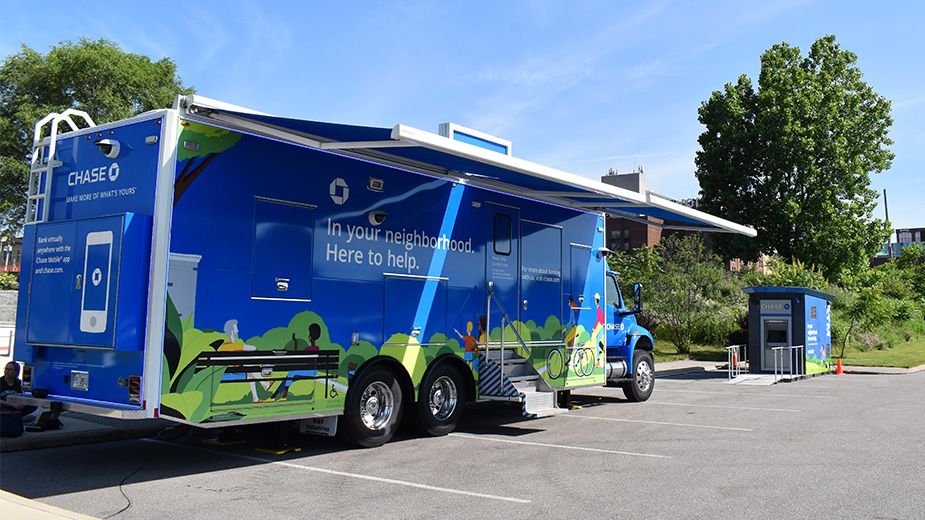Mobile Banking Apps Offer More Features
YOUNGSTOWN, Ohio – With the holiday shopping season here, Sandy Zimmerman recalls when she and her siblings shopped together for a gift for their parents and then split the cost. This required one sibling to buy the item at the store, the others signing and mailing checks to her to cover their shares.
This year is different, Zimmerman says. She and her siblings will go to the store, buy the gift and split the cost – with no one pulling out a wallet or writing her a check.
That’s because PNC Bank’s mobile app adopted new features that offer instant person-to-person and contactless payment.
“We are investing in digital space because digital capabilities are driving the way our customers are banking and investing,” says Zimmerman, retail market manager for PNC.
A Forrester Research study released in August shows that 31% of PNC customers use or are interested in using a “mobile digital wallet,” and 60% of customers at that bank reported they had recently used a person-to-person payment service.
Zelle is a person-to-person payment method many banks are adding to their mobile banking app. It allows the customer to transfer funds directly from his checking or savings accounts to anyone else’s account who’s a customer of a participating institution and has the app.
To transfer funds, one just needs the payee’s mobile number or email address.
“It allows one person to transfer money to friends or family in real time,” Zimmerman says. “You can just ‘Zelle’ each other money when you go out to eat with friends and no need to split the bill.”
PNC isn’t the only bank in the region to offer this product. First National, Home Savings and Farmers National banks are looking into incorporating Zelle into their mobile apps in 2018.
Zelle differs from other payment-to-payment apps, such as Venmo, because the financial institutions that adopt the technology must incorporate it into their security. Fifty financial institutions across the United State have incorporated Zelle into their mobile apps with many more planning to add it.
“The market in general is feeling frustration from customers on slowness of transactions, so this is a solution,” says Sam Kirsch, First National Bank senior vice president for digital channels and payments.
Contactless payment or a “mobile digital wallet” is a product that many banks are moving toward as well.
PNC recently added PNC Pay, Apple Pay, Samsung Pay and Microsoft Wallet into its mobile app as a contactless payment feature accessible for Android, Apple, Samsung and Microsoft mobile devices. This enables a customer to make a payment simply by holding his phone up to be scanned at a cash register instead of pulling out a card or cash or writing a check.
About 25% of merchants accept PNC Pay and other “wave payments,” Zimmerman says, with others accepting contactless payments as it becomes more popular. “You’re never handing a card to a retailer or merchant. You’re just holding your phone up. It’s more secure in the fact that your card never leaves your wallet.”
Banks are working toward having the same options available on all platforms: in a branch, online, mobile or at an ATM.
“Our vision is to create an omni-channel so that our customers can have the same experience wherever they go,” says Robert Steele, Home Savings senior vice president and director of retail operations.
“Mobile transactions increased 28% last year,” reports Amber Wallace, chief retail officer at Farmers National Bank. “People transact that way. So we’re making sure every day that banking is right there on their phone. And we’re treating that phone as a branch.”
To use a bank’s mobile app, one must enter a password, or use his fingerprint to gain access. But most banks offer a quicker option that allows their customers to view their balances without a password or fingerprint.
Other convenient app features banks have or are moving toward include allowing a new customer to open accounts on his own, view account balances, pay bills, transfer funds, remote-deposit checks (by taking a picture of the check on the phone) and having controls on his debit and credit cards.
Bankers agree that all customer demographics are using the mobile apps.
“There is a greater density in younger people that use the app, but it’s used by all cross sections. It’s not just one demographic using it,” says Nate Marshall, vice president of consumer and private banking services at Cortland Bank.
“The convenience [of the apps] has gone to all the generations,” adds Barb Radis, executive vice president of retail banking at Home Savings. “It’s across the board, but the younger generation may be the early adopters.”
In the future, banks believe digital trends will move toward other convenient tools, such as voice technology.
“Being able to do banking via your Amazon Echo or Siri on your iPhone,” says Kirsch at First National. “Where you can ask for your balance or to transfer funds with just your voice.”
The security of digital banking remains a concern for most customers, but banks use data encryption and monitor the security on these emerging products the same as they do other channels.
“The products are going to continue to get safer and people are going to become more comfortable with using them,” says Marshall at Cortland Bank. “As long as people are comfortable with it, they’re going to use digital products.”
Copyright 2024 The Business Journal, Youngstown, Ohio.

